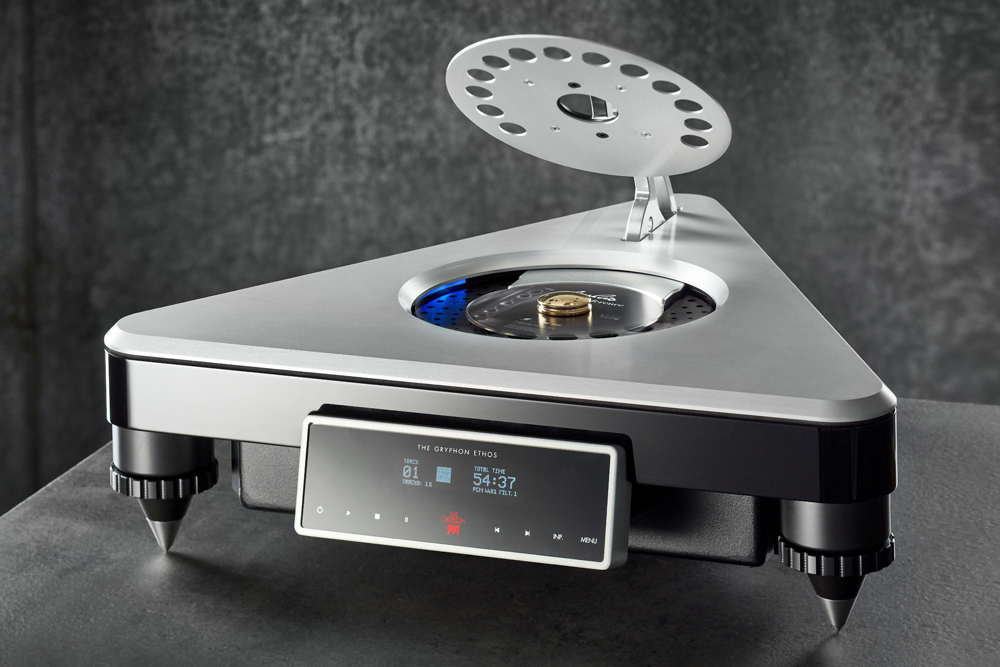How can an audio component, which is effectively a device with a specific function, stray as far away as possible, design-wise, from the ubiquitous plain rectangular box and still fulfil its purpose? What’s more, as an industrial designer, how to free yourself, how to deviate from constraints enforced by the rigours of architecture, functionality, usability, performance? Irrefutably, Gryphon Audio Design’s new Ethos CD player is proof-of-concept. It eschews design convention, seemingly tossing away the rule book…
Aristotle Knew
Indeed, the Gryphon Audio Design’s Ethos CD player/DAC speaks with powerful conviction. Below, I’ll endeavour to illustrate its tremendous performance qualities – that’s hardly giving anything away early, in light of its all-out engineering – but its unique industrial design is what’s most striking at first sight. Visually, it expresses the Greek concept of Ethos – a character or personality… and on a grander scale, it represents Gryphon Audio Design’s cultural spirit, one that genius designer Flemming Rasmussen, himself of grand stature both artistically and physically, has nurtured for decades. In this penultimate design gift to the company after finally retiring to enjoy the fruits of many decades of labour, the master has created what this humble writer considers to be, quite possibly, the most beautiful CD player to ever grace the high-end space. (Coming in second place, I’d select Denon’s 1990s collectible, and quite delectable, DP-S1).
At this juncture, it would be fair for the cynical among us to ask – do we really need such an expensive CD player in 2020? Now, when we can stream high-res audio, which on paper can be superior to CD, from services offering an exhaustive selection of music across all genres? Well, one listen to the Ethos will answer all the questions and put doubts, no matter how staunchly held, well to rest.
Ethos is a unique triangular design – a motif that Rasmussen has also used as a design aspect of Gryphon’s (for short) new Essence range – featuring exquisite construction and the finest materials. That’s its exterior. Internally, the Grand Design philosophy is reflected in the Ethos’ substantial engineering and its considerable up-to-the-minute digital processing powers.
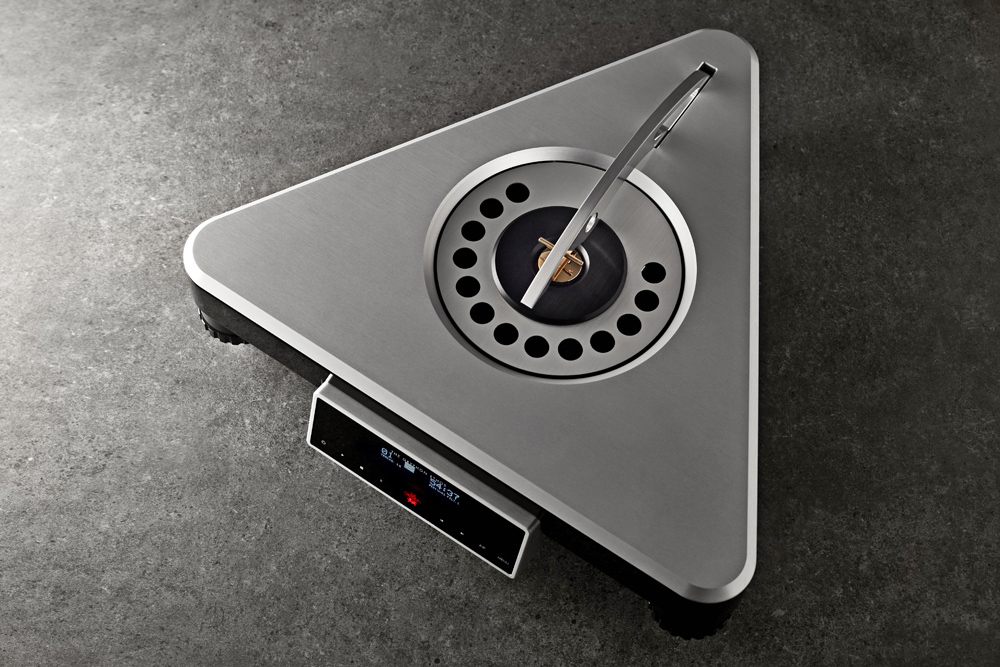
The Ethos’ construction is based around a heavy brushed aluminium top plate housing a Philips CD-Pro 8 high quality, mechanically decoupled, machined metal disc transport. Blue LEDs bathe the disc well, providing functional ease in a darkened room (it could also be said the blue light may provide sonic benefits but that jury is still offsite). A machined aluminium manual swing-up/down arm closes a perimeter-perforated cover over the spinning disc. Playing a CD via this mech requires the use of a stabilising puck, with Gryphon providing a nicely made gold plated unit. In a nice touch that’s testament to fanatical attention to detail, Gryphon provides a small circular leather pad (with Gryphon logo score mark) which can be placed on the player’s top panel as a puck rest in order to avoid the danger of scratching or marking the unit.
The chassis features constrained layer damping techniques in order to keep vibrational distortions at bay while solid coupling to your rack platform is achieved via Gryphon’s ‘Atlas’ integrated adjustable spiking system (scratch-protecting spike cups are provided). The three ‘Atlas’ footers can be adjusted via knurled rings which turn and vary the chassis height – Gryphon provides a small spirit level to ensure proper balance. A black acrylic front display panel houses the high quality dimmable ‘Vacuum Fluorescent Display’ which serves as your window into the machinations of the unit – in other words, it’s a fairly comprehensive information hub.
Either side of the triangle’s rear apex you’ll find the connectivity bays. Aside from spinning discs, the versatile Ethos can act as a DAC via digital inputs (each can be named with up to eight characters) which include USB, S/P-DIF (BNC for proper 75 ohms) and AES/EBU (110 ohms) via XLR. Analogue outputs allow both balanced XLR (Neutrik) and unbalanced RCA operation. Interestingly, Ethos features an AES/EBU output… why you’d need that seeing that the in-built DAC is state-of-the-art is an interesting question – a good chunk of the Ethos’ considerable cost would be allotted to the DAC, why would you bypass it? A 12V trigger and an IEC socket round out the connectivity.
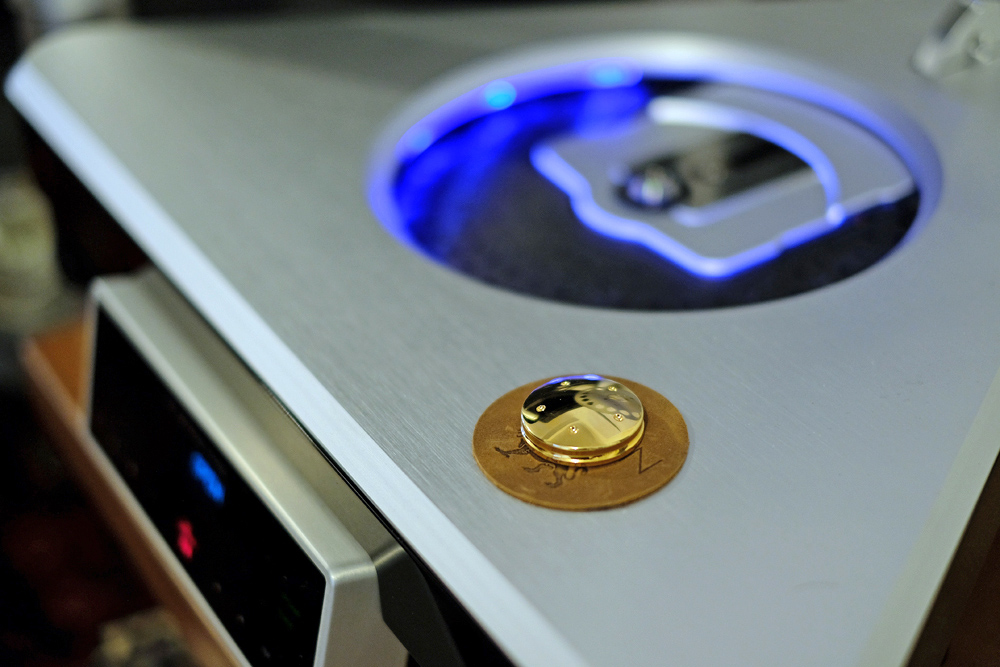
Now, we get even more serious. The fully balanced Ethos runs the top ESS SABRE ES9038PRO 32-bit D/A converter chip per channel incorporating eight individual Digital-to-Analogue Converters in Dual Differential coupling. Filtering options are extensive with seven digital roll-off filters available for PCM and three for DSD playback, all switchable on the fly, of course. Also user-selectable are asynchronous PCM sampling rates which range to 384 kHz (32-bits) with PCM to DSD conversion to DSD128 (Gryphon Audio Designs was one of the leaders in sample rate conversion). Having said that, the USB input is capable of straight DSD to DSD512 (to 24.576 MHz). Of note for the USB module is Gryphon’s use of a massive 12.5 Farad Super-Capacitor power supply effectively operating as a “true battery source”. All digital inputs and outputs have been galvanically isolated in order to contain noise down to minimum levels. The digital circuitry has been engineered to be modular, allowing future upgrades.
As per Gryphon philosophy, the Ethos’ fully discrete dual mono analogue stages operate in pure Class-A with zero negative feedback. Also a Gryphon Audio trademark is the use of massive power suppliers, with Ethos featuring large 32VA toroidal transformers and 20,000 microFarad power capacitor banks for each analogue channel. Further circuit refinements are the implementation of optimised and very short signal paths, 70mm heavy-duty four layer copper trace PCBs, low noise +/- 23 VDC regulated voltage supplies for low THD and noise suppression, temperature-compensated, ultra-low jitter crystal oscillators with “better than five parts per million accuracy” and more.
The Ethos CD player ships in a wooden crate lined with thick formed foam inserts. A top compartment in the box holds the comprehensive user manual and a pair of white cotton gloves for general handling and to calm OCD moments regarding finger print marks on player and puck. Small cartons contain the accessories mentioned above. A heavy metal, rubber-backed remote control provides full access to the player’s features. It takes a short time to get used to the small buttons’ functions and their positions across the remote, especially the central cluster which both operates the playback functions and menu navigation.
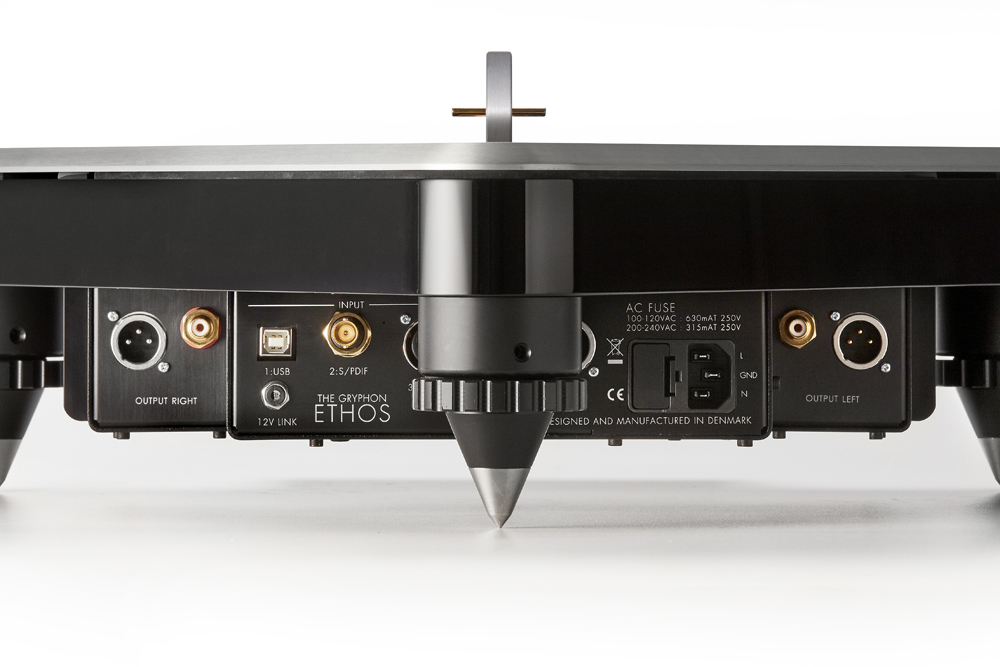
On the menu issue, there are options for input naming, two gain settings (-6dB or default 0dB), a DSD Low-Pass filter option, display brightness selection and more. PCM Filter options are as follows: ‘Filter 1’ indicates slow roll-off, minimum phase filter, ‘Filter 2’ indicates slow roll-off, linear phase filter, ‘Filter 3’ indicates Brick-wall filter, ‘Filter 4’ indicates ‘Hybrid’ filter (default setting), ‘Filter 5’ indicates Apodising filter, ‘Filter 6’ indicates fast roll-off, minimum phase filter and finally, ‘Filter 7’ indicates fast roll-off, linear phase filter. The filter modes are carried across all the Ethos’ input options. Changes can be made on the fly.
Music Logos
I first used the Ethos as a straight CD player (using the default ‘Hybrid’ filter which, after trying the various other filters, I came back to as a preferred option), with subsequent auditioning conducted through its digital inputs fed from an external CD transport via S/P-DIF and my Roon computer audio rig via USB. Throughout my decades of audio gear reviewing, a number of products have stood out, both in the way they provided an arresting first impression and then with further listening, by providing an ongoing long-term unforgettable experience. With Ethos it was… bingo and bingo!
I often warm the system in readiness for a listening session with low-level playback of complex material. Usually but not always, I use the superbly-produced and musically enjoyable Aras from guitarist and percussionist duo Curandero. My plan was to do that just prior to commencing my first serious listening session. Ethos had something else in mind.
Even at moderate ‘warm-up’ level, as I sat at my desk at the opposite end of the room, my neck almost snapped as I turned. Am I hearing this right? Has my system developed a near-octave of deeper and tighter bass? And how come I’ve never heard that subtle string resonance strike from Espinoza or Burhoe’s low level brush on the tabla’s edge? Remarkable.
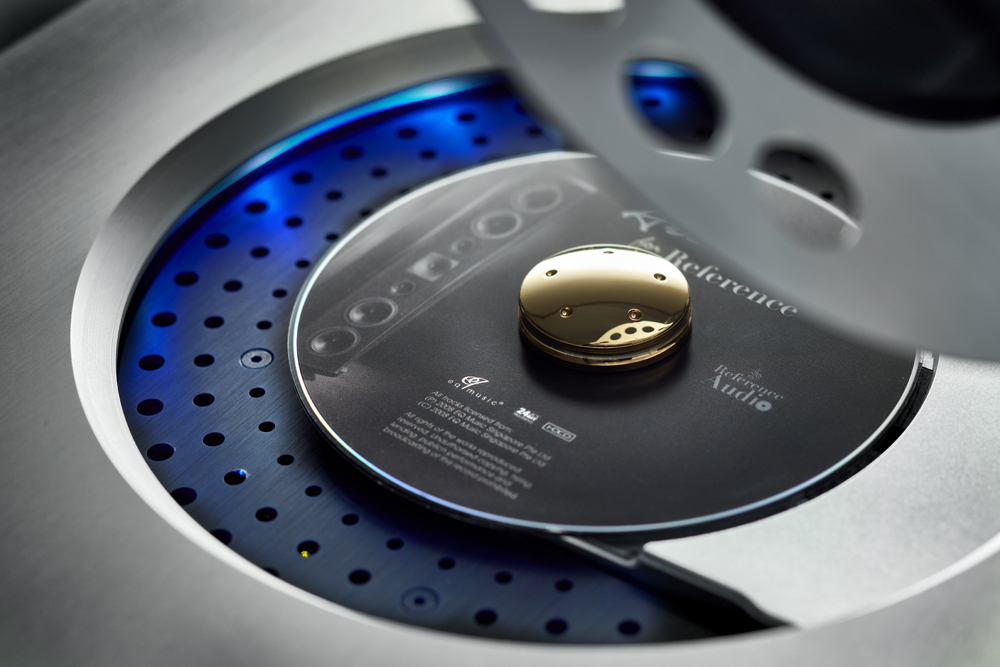
What I also got was an immediate hit of the best bass I’ve ever heard from digital playback and a complete presentation of detail of the “never heard that before” type. Mix that with an enormous soundstage and scary dynamic expression and you have a state-of-the-art digital playback system.
Needless to say this level of reproduction forces you to embark on a voyage of rediscovery. Yes captain, a mission to explore brave new discs where I had never gone before… That was the case with much of the well-produced music I spun. Take Jackson Browne’s Solo Acoustic Vol. 1 and the everlasting track “The Pretender”. Nuances from the live event, Browne’s expressive vocals, his playing technique, the audience at the venue (Melbourne’s Regent Theatre, I believe) and many other subtleties were revealed via the Ethos’ extraordinary powers of detail resolution. Browne varies his distance from the microphone, sometimes further away to mellow the tone and soften the message in the lyrics and, at other times, he nears the mic to enhance power. Ethos flies with Browne’s dynamic shading without wavering. It’s the Ethos’ stunning dynamic expression that brings vital verisimilitude to this wonderful live performance.
For a couple of months now, I’ve been going through a period of using the excellent Audio Physic CD sampler for reviewing, especially Track 8 an excerpt from Mahler’s 1st Symphony “Titan”, a slow-to-mid-paced piece which builds to a devastating percussion climax. Devastating is a pertinent word here, Ethos delivering a massive crescendo which was a rather scary experience, thanks in the main to my reference Supratek preamplifier, Gryphon Audio Designs Antileon EVO amplifier and the Wilson Alexia Series 2 speakers (and especially now that the room has had its full Vicoustic acoustic treatment) all of which are adept at tracking big dynamics. Seldom have I heard such power and contrast between the delicate softness and brutal loudness of the instrumentation in that Mahler piece. Ethos presents music… BIG!
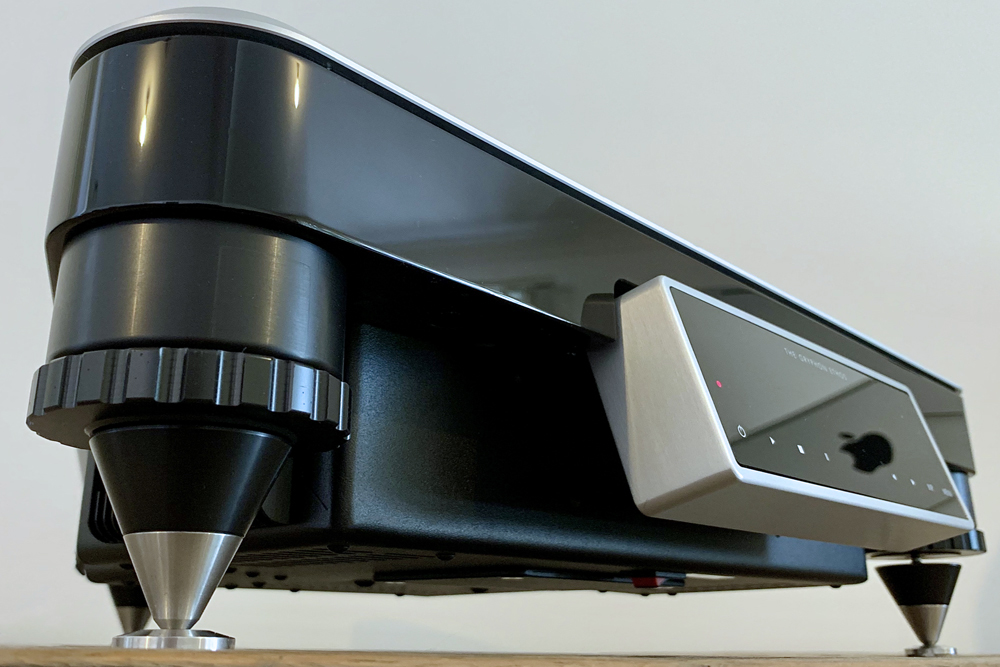
Wanting more of the same powerful stuff, I Roon’ed the Tony Dagradi Trio’s Live at the Columns. This somewhat difficult to find release – if you see it and you like Jazz, pick it up, you won’t regret it – was recorded with zero compression. Playing it is tricky because you’ll tend to whip the wick up for the mellower passages and then a drum solo will hit you between the cojones. Wow Ethos! Those drums are almost in the room two meters away…
Ethos is just not all about digging into chasms of recorded detail and jetting to the stratosphere of dynamic swings, but it can also be as refined and delicate as the very best in digital and analogue. The sweetness of the strings and piano on the Francesco Trio’s interpretation of Dvorak’s Trio in E Minor, Opus 90, The “Dumky” (CD) is so appreciated. The music undulates with emotive flow and the Ethos pulls you in to a very captivating performance rich in tonal textures, nuanced instrumentations and overall… satisfaction and engagement with the music.
“Winter Wind” from Patty Larkin’s excellent Angels Running showed the feel and, umm, pathos (pun intended) Larkin conveys in this CD rip to FLAC. Larkin is an excellent songwriter and she’s capable of pulling you in with not just her lyrics (touchingly depicting the angst, the ecstasy and the pain of love) but also grabbing you with the instrumentation’s atmospherics. The string plucks and hits at the track’s intro have air, extension and precise tonality making you prop-up and notice while Larkin’s vocals are sweet, very present and projecting forward of the speakers.
Acoustic instruments with particular tonal signatures are excellently rendered with the Ethos. Regular spinner Paris, Istanbul, Shangai CD by Joël Grare is a deep well of tonal colours and intricate instrumental expressions. Ethos captures the signature sound of all the percussive devices while also offering the ‘er bu’ (Chinese two-string violin) with superb fidelity and sensitive nuance.
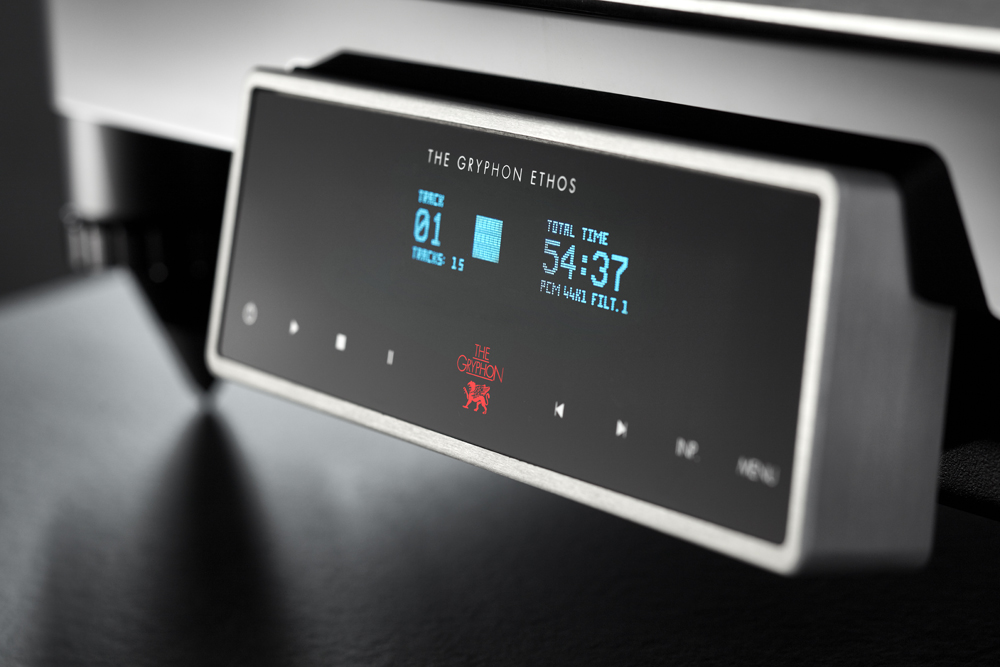
The same pattern of unrivalled enjoyment continued through a huge selection of my music library – file and disc. What Gryphon has achieved within the context of the Ethos player/DAC is nothing short of remarkable. Let me make this clear too: to consider Ethos as just a CD player would sell it well short. Yes, it offers a very high quality disc transport mechanism which handles the silver disc to the highest level, but it’s more than that. Its comprehensive inputs option in DAC mode allows you to take full advantage of its superb on-board digital engine. You’ll attain extraordinary performance from your streamer and computer audio rig (whether via USB or the other digital inputs).
Conclusion
In the current digital state of play, the stream of newer DAC chips are offering ever-improving specifications and extended playback abilities, perhaps approaching a technology ceiling in terms of high-resolution. Conversely, there’s also a lot to be said for the older revitalised multi-bit technology which has seen the recent emergence of several R2R/multi-bit DACs claiming that methodology’s sonic superiority. In fact, aiding both the new and old technologies, ongoing improvements to input/output stages and power supplies also offer worthwhile performance refinements across the board.
Ethos’ use of the ESS SABRE ES9038PRO 32-bit D/A converter certainly brings it to up-to-the-minute status. Add that high-end DAC chip to Ethos’ heroic power supply (something Gryphon’s renowned for), the meticulous attention to circuit details, the comprehensive mechanical and vibrational isolation techniques and the skilful input of an industry-leading engineering team and you have the formula for digital playback excellence. Then, you have that aesthetic… my-oh-my.
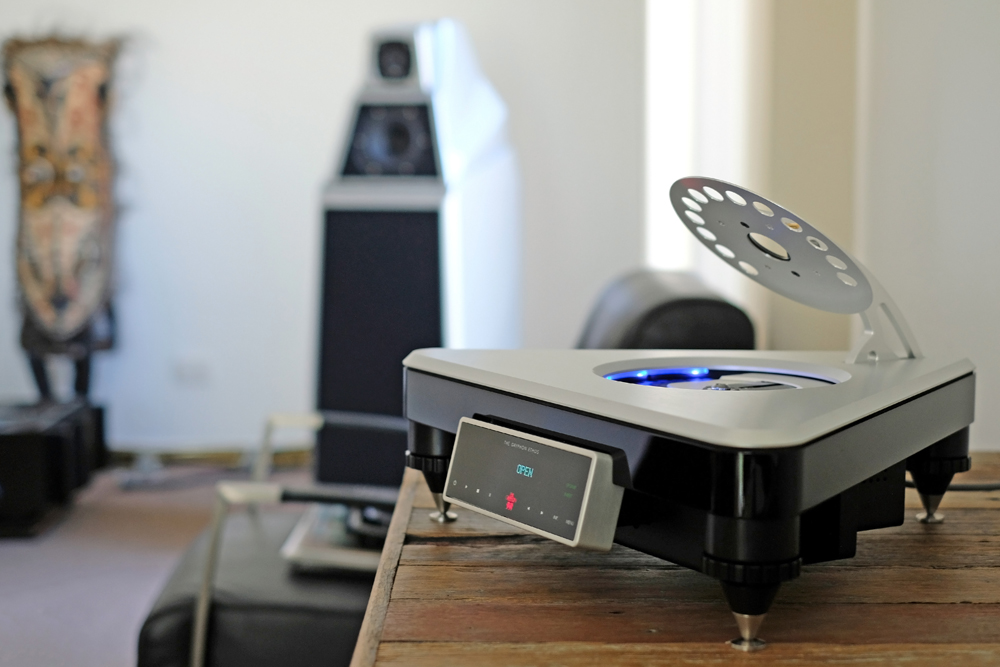
The Ethos’ ability to convey musical detail, dynamic communication and low-end power is unmatched. And you can add all the other aspects of high-end reproduction such as soundstaging, imaging, tonal accuracy, low level transient attack, etc. and you’ll find them at their most extended expression via Ethos. It’s by quite the margin, the best digital playback I’ve heard in my system – and I’ve heard a whole bunch of them, some at similar price points.
There are many descriptions of the word ‘ethos’. In Greek philosophy, it is one of the three modes of persuasion and it can mean character and the ideals of a society or entity while also referred to as the power of music to influence emotions, behaviours and even morals. Persuasion and influencing the emotions… Nothing could be more precise in describing Gryphon’s Ethos CD Player/DAC.
It may be trivial, but this is the acronym I’m left with after joyfully living with the Gryphon Audio Designs Ethos for several weeks – O…M…G!
… Edgar Kramer
This email address is being protected from spambots. You need JavaScript enabled to view it.
Associated Equipment
- Speakers — Wilson Audio Alexia Series 2, Axis Loudspeakers VoiceBox S(nearfield monitor), Vermouth Audio Little Luccas Mk.II
- Amplifier — Gryphon Audio Antileon EVO
- Preamplifier — Supratek Cortese, Lightspeed Attenuator LDR passive
- Sources — Digital: Yamaha CD-S2100 transport, Chord Electronics Hugo M Scaler, Totaldac d1-core DAC, Asus PC as Roon Core. Analogue: Michell Engineering Orbe with Gert Pedersen Level 3 modifications and Origin Live Ultra upgraded motor, Trans-Fi Terminator air bearing linear-tracking arm, Shelter Harmony cartridge, Supratek Cortese & REDGUM Audio RGPH2 phono stages
- Processor — DEQX PreMate
- Cables — sILENzIO loom, Vermouth Audio Reference loom, Vermouth Audio Black Pearl Mk.II loom,
- Audio Rack — SGR Audio Statement Model V
- Acoustic Treatment — Vicoustic Multifuser Wood, Wavewood Ultra, Cinema Round Premium and Super Bass Extreme
- Miscellaneous — GigaWatt PF-1 EVO, Les Davis Audio Viscoelastic CLD discs, VRC Vinyl Record Cleaning system
Gryphon Audio Designs Ethos CD Player/DAC
Price: AU$59,995
Warranty: Five Years
Australian Distributor: Kedcorp
PH: +61 2 9561 0799
www.kedcorp.com.au
Gryphon Audio Designs
Industrivej 10B
8680 Ry
Denmark
+45 86 89 12 84
www.gryphon-audio.com







